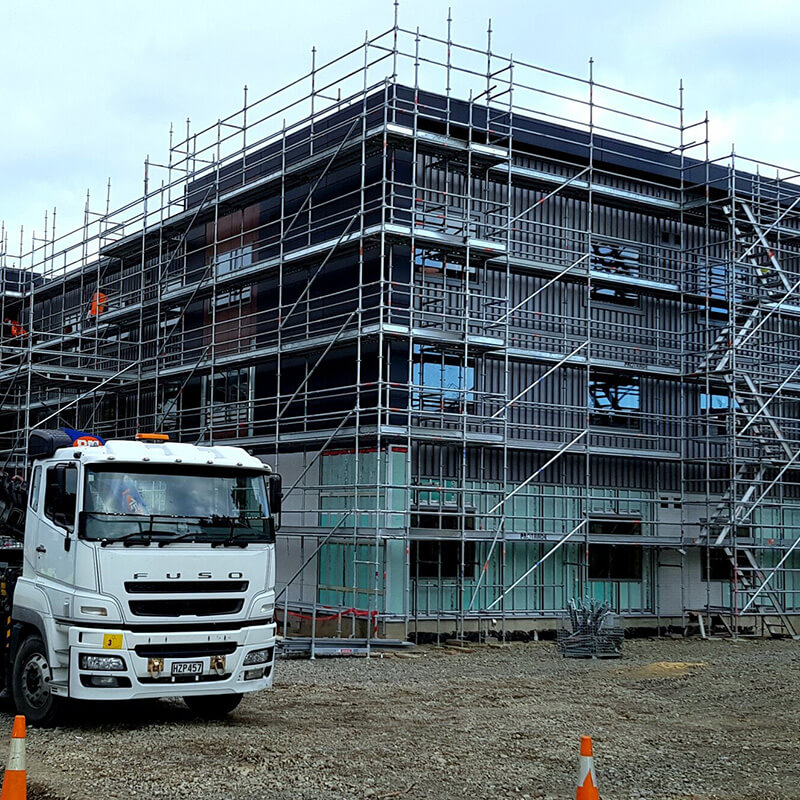In the ever-evolving world of commercial construction, temporary frameworks plays a pivotal role in ensuring productivity and safety on work sites. As projects grow in complexity and scope, the importance of sturdy scaffolding options becomes more pronounced. This text explores the various facets of commercial scaffolding, from its significance in enabling work processes to its critical function in enhancing job site protection.
Comprehending what industrial scaffolding involves is the primary action toward recognizing its value. It serves as a transient structure that allows workers to access multiple heights safely and securely, making it essential for both new constructions and remodels. With various types of scaffolding available, including modular systems to traditional tube and clamp methods, selecting the right solution can greatly impact the success of a construction effort. Join us as we explore further into the evolution of scaffolding, discovering new developments that are transforming the landscape of business construction.
Comprehending Business Scaffolding
Business structures serves a key function in the building field, serving as a transitory structure that allows workers to access elevated areas without risk and efficiently. This kind of structure is essential for various construction projects, from tall buildings to business renovations, as it backs both the employees and materials needed to finish tasks at height. With a range of designs and systems available, commercial structures can be customized to suit the specific needs of any project, guaranteeing that protection and approachability are emphasized.
There are several kinds of structures used in commercial construction, every created for different purposes and job requirements. Common types include tube-and-clamp scaffolding, system platforms, and modular scaffolding, every offering individual benefits. For instance, modular structures is commonly favored for its convenience of assembly and adaptability, while tube-and-clamp structures provides a more customizable answer for complex projects. Understanding these alternatives is essential for contractors and project managers in selecting the optimal scaffolding for their specific needs.

Protection is a primary concern when it comes to business structures. Proper use and upkeep of platforms can significantly enhance worksite safety by providing secure surfaces for workers and preventing falls and accidents. It is important for teams to be adequately prepared in platform safety protocols and to conduct regular safety inspections. In why not try here to following Occupational Safety and Health Administration regulations, companies should focus on ongoing education and compliance to safety standards to reduce common scaffolding hazards and ensure a protected work environment.
Protection and Compliance in Scaffold Systems
Guaranteeing safety and adherence in scaffold systems is crucial for safeguarding workers and reducing project risks. Industrial scaffolding is bound to strict standards set forth by entities such as the Occupational Safety and Health Administration. These guidelines dictate everything from design and weight limits to construction and dismantling procedures. Adhering to these regulations is not just a lawful requirement but also a critical aspect of ethical project management. A solid understanding of regulatory factors helps avoid accidents and promotes a environment of well-being on the job site.
Education is a critical component of scaffold system safety and compliance. Every employee must be trained on the proper use of scaffold techniques and the potential hazards they may face. Regular training sessions should cover Occupational Safety and Health Administration regulations, safe practices, and emergency procedures. Equipping the workforce with knowledge ensures that all personnel involved understands their responsibilities and appreciates the importance of following safety measures to mitigate risks effectively.
Carrying out thorough safety inspections before and during the use of scaffold systems is crucial for compliance. Regular assessments should include inspections for stability, deficiencies, and environmental factors that could impact stability. By identifying and addressing these issues early on, project managers can significantly reduce the likelihood of accidents. A preventive approach to inspections not only complies with compliance requirements but also fosters a safer working environment for all personnel in the project.
Scaffolding Systems for Different Projects
Temporary scaffolding holds a critical function in a wide range of projects, adjusting to the unique needs of every project. For example, multi-story buildings often require custom scaffolding systems that can reach considerable heights while maintaining structural integrity and protection. These systems are developed with elements that meet the complexities of urban building, allowing crews to operate efficiently at elevated levels without compromising safety standards. The flexibility of scaffolding solutions enables construction teams to manage the challenges of dense environments while ensuring productivity.
In furthermore to high-rise construction, scaffolding solutions are crucial for remodeling in business buildings. During these projects, it is critical to ensure that the scaffolding can support both the load of workers and equipment while providing safe access to different zones of the structure. Tailored scaffolding configurations can be designed to suit various architectural schemes, enabling contractors to manage complex renovations that often face unique challenges. This flexibility enhances project timelines and promotes a more efficient workflow.
Furthermore, large venues such as stadiums and academic institutions present their own scaffolding challenges. These undertakings often require comprehensive solutions that not only facilitate construction but also accommodate large audiences during activities. Scaffolding must be engineered to manage increased loads while ensuring the safety of both workers and the public. By employing advanced scaffolding solutions, contractors can develop secure working environments that effectively support the unique requirements of major projects, ultimately leading to the successful completion of essential community development.
